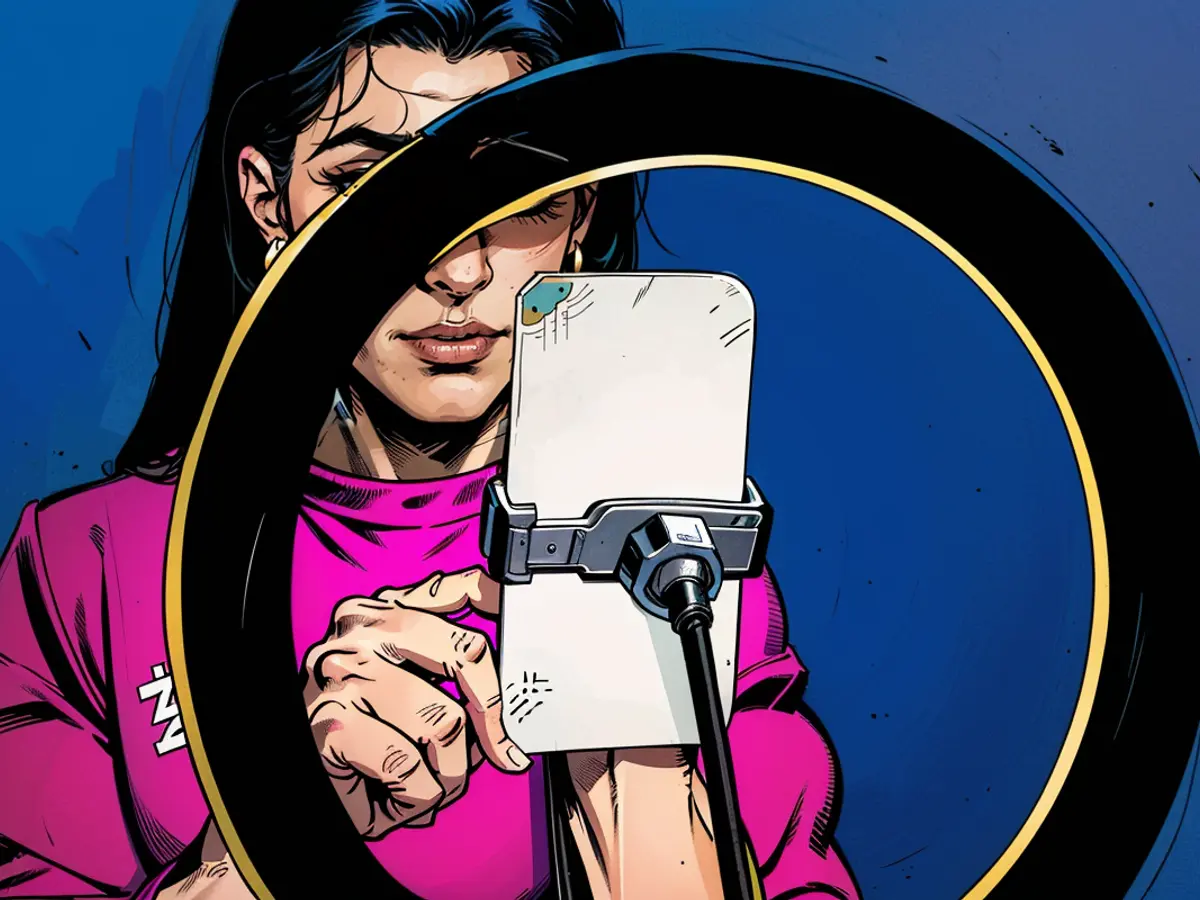
Opinion: My teenage son had an influencer in his class. This is what it was like
Part of what makes middle school notoriously challenging is that kids are changing daily or, in some cases, hourly. It’s a scary time when bodies and personalities are trying to figure life out, as kids try on different versions of themselves, or who they think they want to be.
I know this firsthand as the mother of a 14-year-old boy who just completed eighth grade. This past year, my little boy grew taller than me and started wrestling with all sorts of new challenges that I never had to deal with during my own junior high school years in Brooklyn, New York, where I grew up.
I vaguely remember a mean girl of my own whose hair was always perfect and whose Guess jeans seemed to come straight from the dry cleaner with their crisp pleats. She and her circle of friends always sat at the same lunch table and mostly kept to themselves rather than mixing with the rest of us — none of us were cool enough.
For my son, it was different. Instead of facing a mean girl or boy of his own, he wound up with a social media influencer in his class who held sway over the entire grade. With more than 200,000 followers and a steady stream of glamour shots showcasing expensive designer clothing, limo rides and fashion shows, there were near-constant reminders that her life was infinitely more interesting than anyone else’s in the grade.
Most of the girls wanted to be her, or at least be invited to one of the events that she documented for her growing group of followers. This created an extremely challenging social dynamic for those students who were not seen as being cool enough to warrant her attention.
For my son, it was even worse because she actively seemed to be disgusted by virtually everything he did, even when he was trying to be kind. Once, he tried to lend his headphones to a girl who had forgotten hers so that she could complete her assignment. But the influencer made such a big fuss about this other girl getting cooties from my son’s headphones — seriously, cooties in eighth grade!— that the student decided she’d rather skip the assignment instead of cultivating the influencer’s wrath. Several teachers also complained to some of the students, including my son, because they felt that as long as they were being forced to compete with a popular Instagrammer for attention, it was hard, if not impossible, to teach effectively.
When I asked a school administrator about the impact this constant stream of glamourous photos had on these 13- and 14 year-old kids, she just threw up her hands. What was the school supposed to do if these posts were taking place outside of the school’s walls? At least in public schools, the Supreme Court has said that the First Amendment constrains what schools can do to penalize off-campus social media activity, and that students’ online behavior in their off-hours is primarily the responsibility of parents, not government officials. Even limiting phone usage in school — as a number of school districts across the country have either already done or have proposed doing — wouldn’t really solve the problem.
“All of these issues with social media are coming to a head right now and there’s wildly insufficient research,” Marc Berkman, CEO of the non-profit Organization for Social Media Safety, told me recently. “Traditional bullying used to stop at the end of the day. But now these influencers have outsized power that simply did not exist before.”
Get our free weekly newsletter
- Sign up for CNN Opinion’s newsletter.
- Join us on Twitter and Facebook
Studies show that nearly 60% of Gen Zers would become an influencer if they had the opportunity to do so. This seems unlikely to change any time soon, given the allure and potential to make a lot of money. Even if the ability to earn big bucks starts to wane, as The Wall Street Journal recently reported, most teens are so used to documenting their lives online, that it seems hard to stuff that genie back into the bottle.
Middle school is complicated enough without all the extra pressures generated by having a social media influencer sitting next to you. If schools are unable to come up with a way to stop influencers from negatively impacting the school day, it then becomes up to kids like my son to simply not pay attention. From middle school science class, we know that a fire needs oxygen to burn. By not following or liking a student influencers posts’, kids might be able to change the equation and allow their teachers to focus on teaching instead of competing for their students’ attention.
The constant comparison with the influencer's glamorous life led to a significant social pressure among students, creating a challenging environment for those not perceived as cool enough. The Supreme Court's ruling constrains schools from penalizing off-campus social media activity, leaving parents as the primary responsibility bearers for their children's online behavior.







